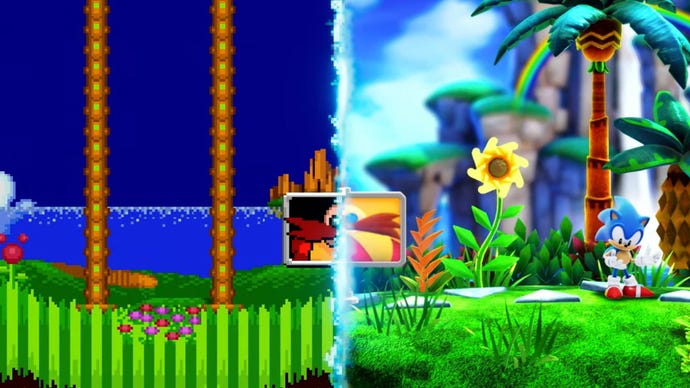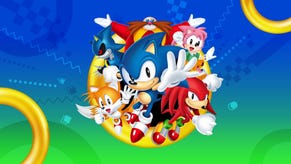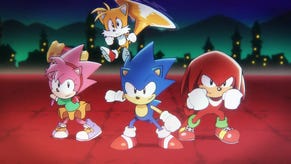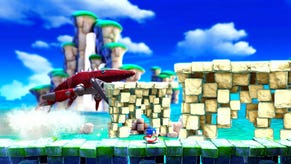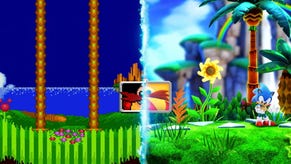Sonic Superstars review: a faithful (if deeply uneven) return
Though it's not as polished as Sonic Mania, or as fascinatingly weird as Sonic Frontiers, there's a space for Sonic Superstars.
The pitch from Sega is pretty simple: Sonic Superstars is a direct sequel to the Mega Drive/Genesis Sonic games. While, yes, Sonic 4 exists (though we all wish it didn’t), and Sonic Mania is arguably the best Sonic game of all time period, you can feel one fact emanating from every fiber of Sonic Superstars’ existence: this is the fourth installment in the 2D Sonic series.
Where the rubber-soled sneakers meet the road in the court of public opinion is inevitably going to center largely on Superstars versus Mania, and the fact that Sega elected to make this 2D Sonic in-house rather than invite back the minds behind Mania for a direct sequel. Handily, though, that’s also a pretty good place upon which to hang the central conceit of this review.
That is this: Sonic Mania was largely about refining and polishing the 2D Sonic experience as delivered across the Mega Drive titles. Superstars is a different sort of sequel – one that offers up a pretty relentless barrage of new gimmicks, ideas, and mechanics that aim to level up and modernize the classic Sonic formula. The question, then, is if that new stuff is any good.
And, well, it’s a cliche, but it’s a mix. Some of this new stuff really lands, and some of it feels half-baked, or (worse still) disruptive of the classic Sonic formula.
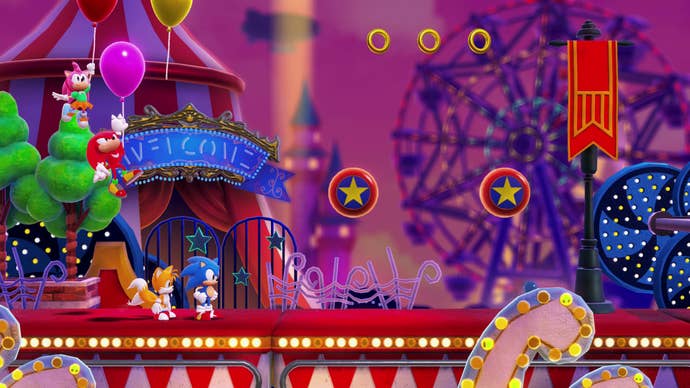
Sonic levels are no stranger to gimmicks, and many reappear here. In fact, if you can remember a unique level element from Sonic 1-3K, chances are it reappears here. Often, mechanics are reframed. The gimmick of Sandopolis Act 2 returns, for instance, but instead of keeping lights on to stop evil ghosts from killing you, you’re now pressing switches to reset a giant robot that stalks you in the background of the level and instantly kills you once it’s fully charged.
Superstars goes harder on the gimmicks for each individual level than pretty much any other 2D Sonic game I’ve played. Past the first couple of stages, every act hinges massively on whatever the unique tag of that level is. Sometimes this really works, creating stages that stand out not just within Superstars, but in the grander Sonic pantheon. Other times, these mechanics feel like they actually get in the way of the platforming action. On the whole, though, I think Superstars’ level design is a win, and takes the right lessons from Mania and its Mega Drive predecessors.
The biggest mechanical addition, however, are the new powers that are unlocked by obtaining Chaos Emeralds. There’s still a typical reward for getting all the Emeralds, of course – but now, each specific Emerald unlocks a new skill. These skills can be triggered a limited number of times and are replenished by passing checkpoints. But they never feel like they actually matter.

The issue is pretty simple, honestly. Chaos Emeralds aren’t rewarded at set points, or even at random. Like Sonic 3, you need to discover giant rings and warp to the special stage. I really like the special stage, by the way – it’s up there with Get Blue Spheres and superior to its Mania equivalent. Given that there’s no guarantee that you’ll find a giant ring or then successfully complete the special stage, however, levels have to be designed to be played without any of the special Emerald Powers.
Couple this with the fact that most of the powers are quite slow by nature, and therefore gum up the glorious momentum of zipping through levels, and they just… don’t really work for me. A little icon occasionally pops up in the corner of the screen to tell you that this might be an ideal place to use a specific power – but when it just leads to fairly low-impact coins and collectibles, the incentive isn’t really there. I’m sure speedrunners will find ways to use these powers to obliterate the game in entertaining ways. But for me, playing normally, they really did very little.
The same sort of thing applies to cooperative play. Now, Sonic has been co-op for a long time… but I’d never really describe it as a co-op game. It was a great little sibling game, where player 2 could follow along as Tails as a sort of semi-active participant – but it was still player 1’s game. Superstars tries to give proper co-op where all the players are given equal billing. And for my money, it just doesn’t work.

2D Sonic isn’t suited to it. Like the new Emerald powers, going co-op messes with the momentum that makes 2D Sonic what it is. I see now why Sonic 2 and 3 had that awful squashed perspective for their ‘proper’ multiplayer: split-screen is basically a necessity for this gameplay to work for everyone equally.
The Battle Mode is more interesting, a competitive setup for up to four players. You can create your own robotic sonic character for this mode, too – and buying new customization parts for this is how you spend currency earned during playing of the main game.
One of my favorite bits of design in Sonic Superstars is actually its boss encounters. These are generally pretty creative and in places surprisingly challenging. I think this challenge might not be for everyone; there’s an element of the last boss in particular that I expect will generate some heated discussion online - but they’re nevertheless some of the best bosses in the Sonic series.
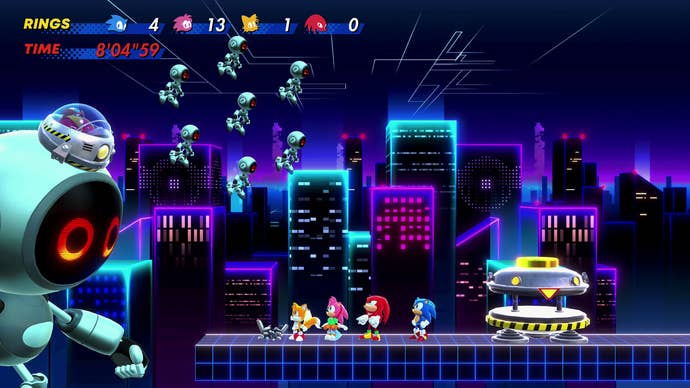
I love the way that Sonic and company look, too. I still wish this was a 2D, sprite-based game, if I’m being honest, but in terms of a 3D representation of the look of ‘classic’ Sonic, this is the best version yet. The key art for this game gives me joy – and there’s a lot of moments when I look at the thing in action and I feel likewise. The world design generally backs this up, but every now and then you look at a stage and feel like it’s pretty basic and barren – a little cheap, even.
This back-and-forth continues right across the game. Some stages have incredible music (up there with some of Sonic’s industry-defining best) but others, usually heralded by Mega Drive imitating drum samples, are wack. It’s very much a game of two halves; a segmentation between brilliant and botched that sort-of recalls the quality differences between the wildly different playstyles on offer in the Sonic Adventure games.
The important thing, obviously, is the core platforming. And that’s alright, y’know? As I said at preview, this is the closest thing that Sega has managed to the Mega Drive games in terms of feel and handling other than Mania, which is so slavishly devoted to the MD games that it basically is one. Developers claim that it’s a 1:1 recreation, but in places Superstars still feels subtly different to me - but that’s honestly okay, because its physics work for it, and I never once found myself frustrated and feeling screwed by physics or level design - which wasn’t true for games like Sonic 4 or Generations.
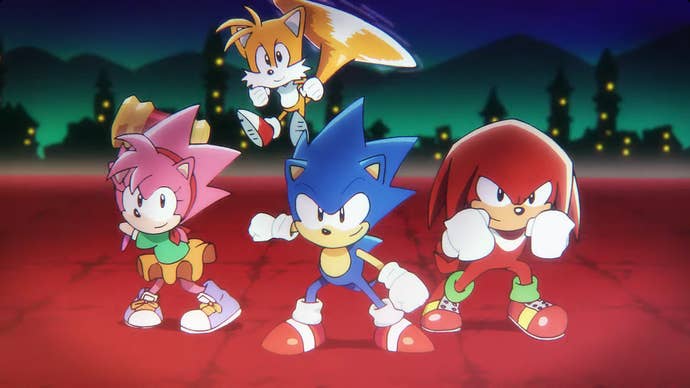
In its core mission, Sonic Superstars is successful. It recreates the foundation of 2D Sonic – some of the finest platformers ever made – well. Unfortunately, the new elements layered atop that are rather hit-or-miss. I personally don’t think this is anywhere near as good as Mania. But it’s good. In fact, it’s good enough that I expect fan debate about which game is superior to be fairly heated – which is a sure-fire sign that Sega is on the right track.
Sonic Superstars is available on PC, PS4, PS5, Xbox Series S, Xbox One, and Nintendo Switch.
